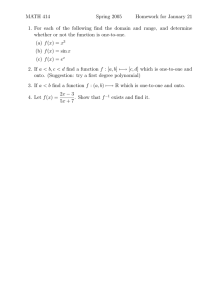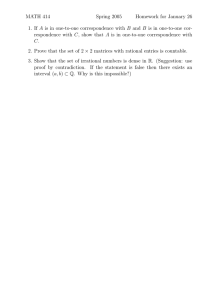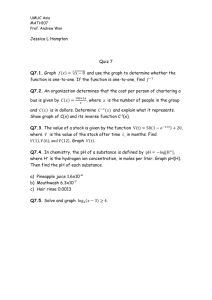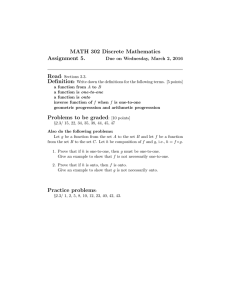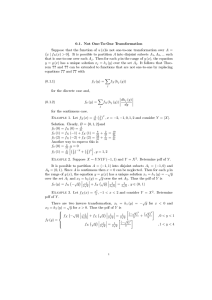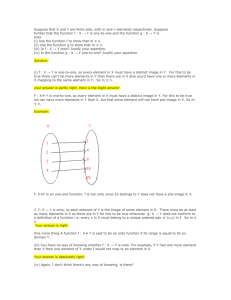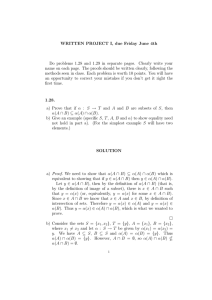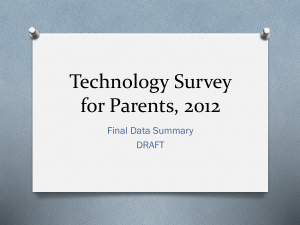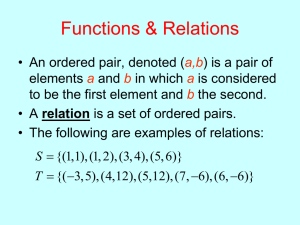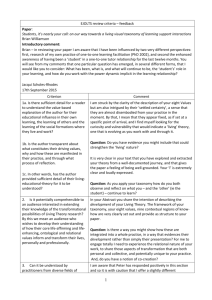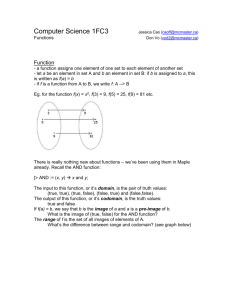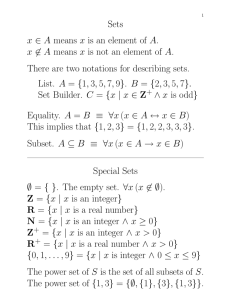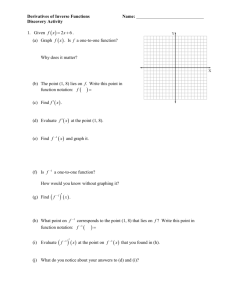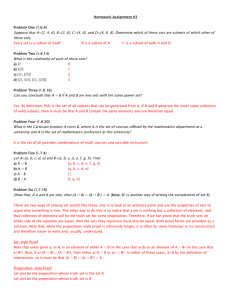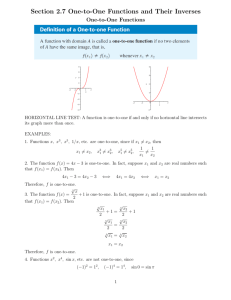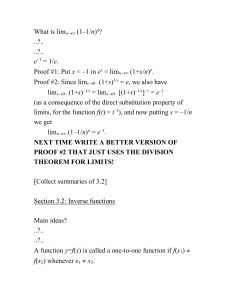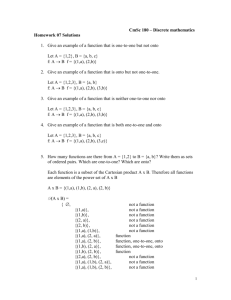Verifying one-to-one Algebraically
advertisement
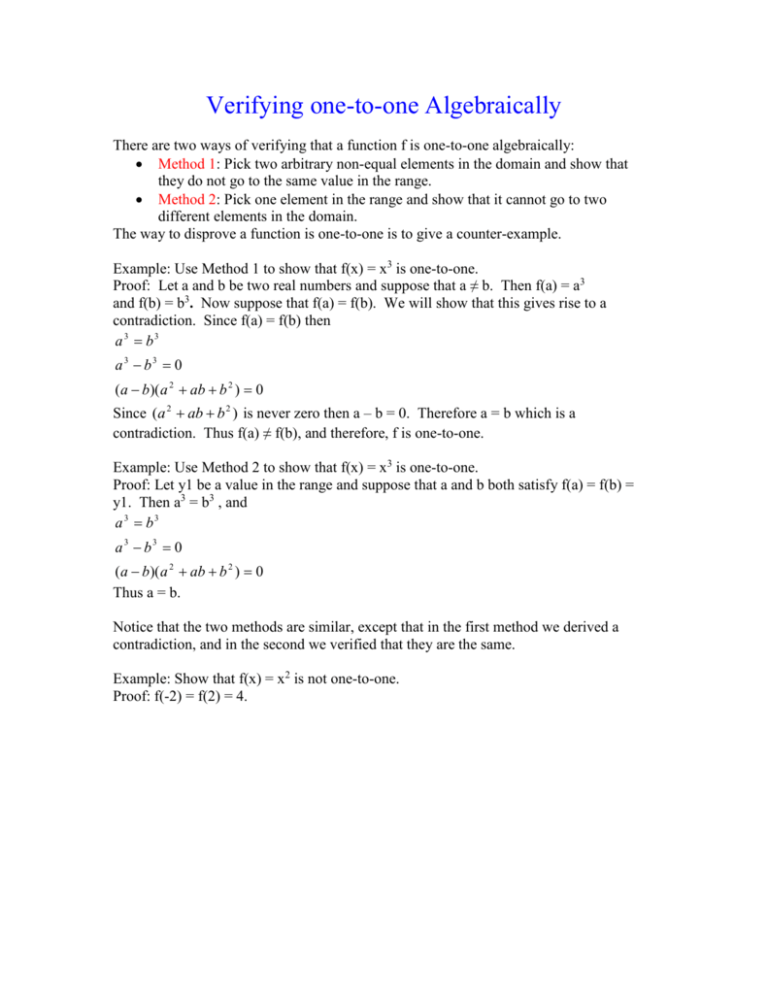
Verifying one-to-one Algebraically There are two ways of verifying that a function f is one-to-one algebraically: Method 1: Pick two arbitrary non-equal elements in the domain and show that they do not go to the same value in the range. Method 2: Pick one element in the range and show that it cannot go to two different elements in the domain. The way to disprove a function is one-to-one is to give a counter-example. Example: Use Method 1 to show that f(x) = x3 is one-to-one. Proof: Let a and b be two real numbers and suppose that a ≠ b. Then f(a) = a3 and f(b) = b3. Now suppose that f(a) = f(b). We will show that this gives rise to a contradiction. Since f(a) = f(b) then a3 b3 a3 b3 0 (a b)( a 2 ab b 2 ) 0 Since (a 2 ab b 2 ) is never zero then a – b = 0. Therefore a = b which is a contradiction. Thus f(a) ≠ f(b), and therefore, f is one-to-one. Example: Use Method 2 to show that f(x) = x3 is one-to-one. Proof: Let y1 be a value in the range and suppose that a and b both satisfy f(a) = f(b) = y1. Then a3 = b3 , and a3 b3 a3 b3 0 (a b)( a 2 ab b 2 ) 0 Thus a = b. Notice that the two methods are similar, except that in the first method we derived a contradiction, and in the second we verified that they are the same. Example: Show that f(x) = x2 is not one-to-one. Proof: f(-2) = f(2) = 4.
